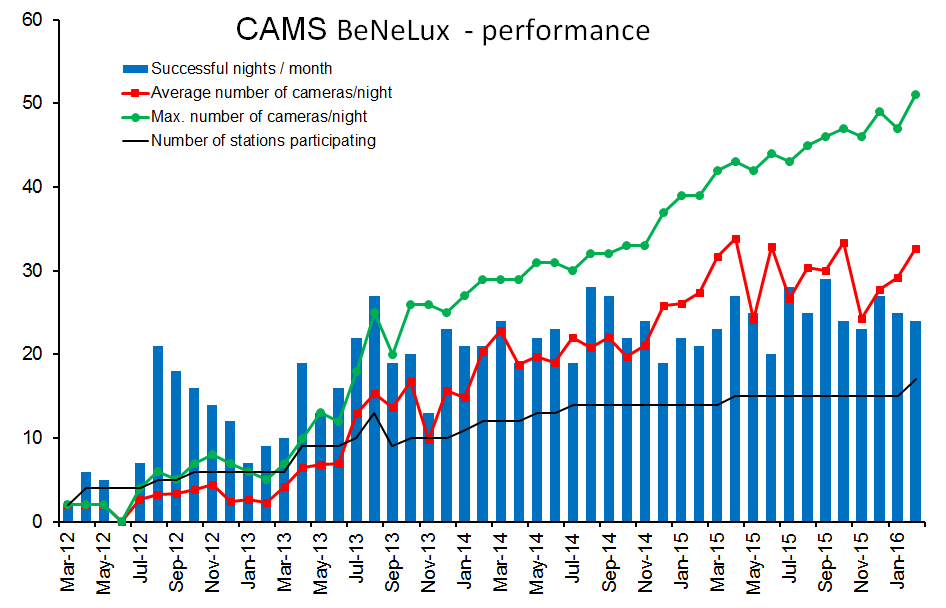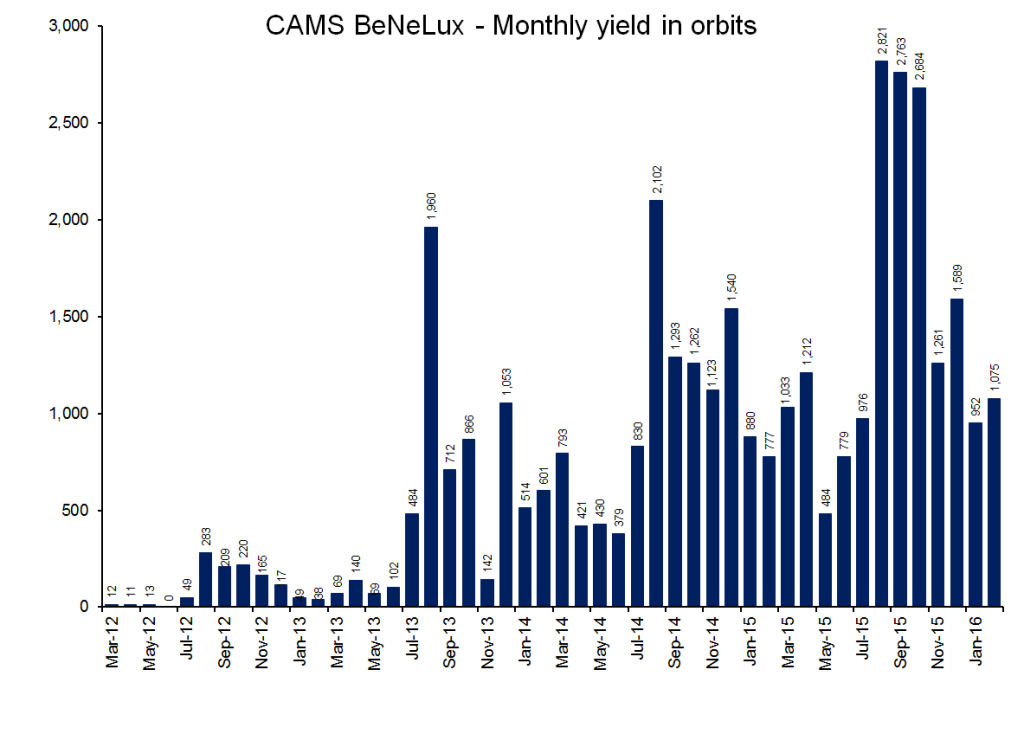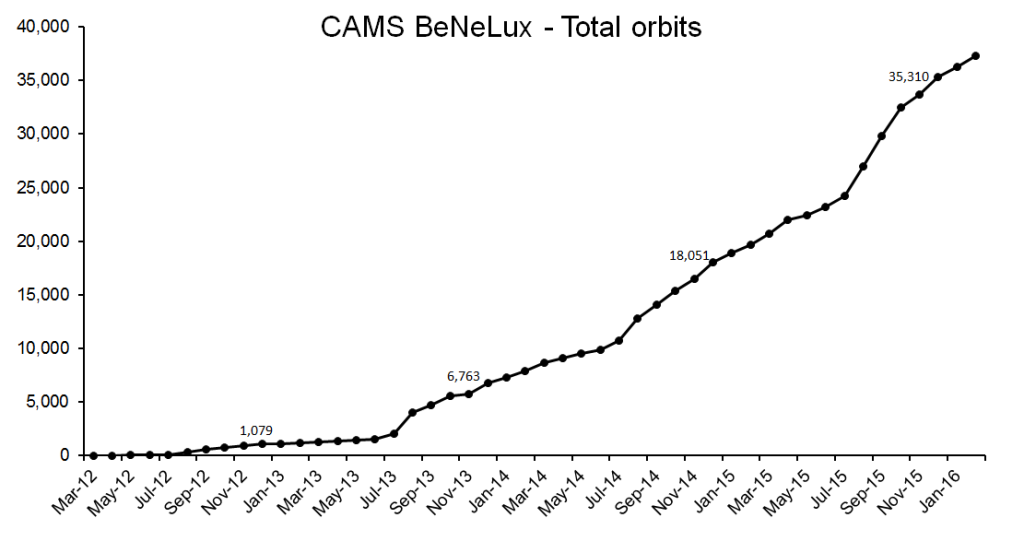After October 2015 we got back with two feet on the ground, struggling with our Atlantic climate and cloudy skies. A complete network wide clear night produces 100 to 200 orbits per night in November or December. January can still produce ~150 orbits per clear night. The winter of 2015-2016 wasn’t favorable for CAMS@Benelux, without being extraordinary bad. February continued this trend with only few clear nights and mainly scattered clear sky period during most nights, only 4 nights did not allow collecting any single orbit in February. February 2016 ended with 1075 orbits added to the CAMS database, not bad at all with our unstable climate! This was mainly thanks to the perseverance of all camera operators. Partial cloudy nights produce lots of false detections and require a lot of patience and time to get each camera calibrated and the real meteors filtered out (visually) from the many false detections.
In Figure 1 the blue bars depend mainly on mother nature (weather) and indicate the number of nights that orbits were successfully collected. The green line shows the maximum number of camera’s that could be operated per month. The red line is the average number of cameras functioning per night which depends on the weather and available number of cameras. The black line is the number of stations participating.
Figure 2 shows the number of orbits collected per month. And Figure 3 shows the total number of orbits collected by CAMS@Benelux so far. End February 2016 CAMS@Benelux had 37.337 orbits collected.
This report is based on the monthly list of simultaneous meteors provided by the network coordinator Carl Johannink to all CAMS participants.

Figure 1 – Number of successful nights, maximum available cameras, average number of cameras and maximum number of stations per night for each month.

Figure 2 – Monthly yield in number of orbits.

Figure 3 – evolution of the total number of orbits collected.




